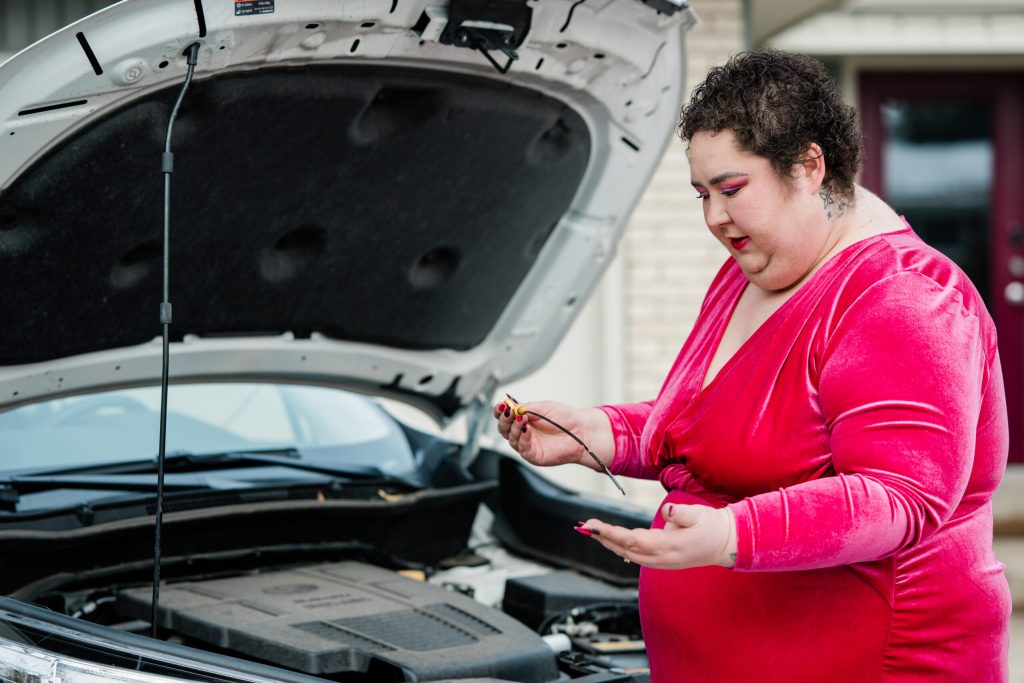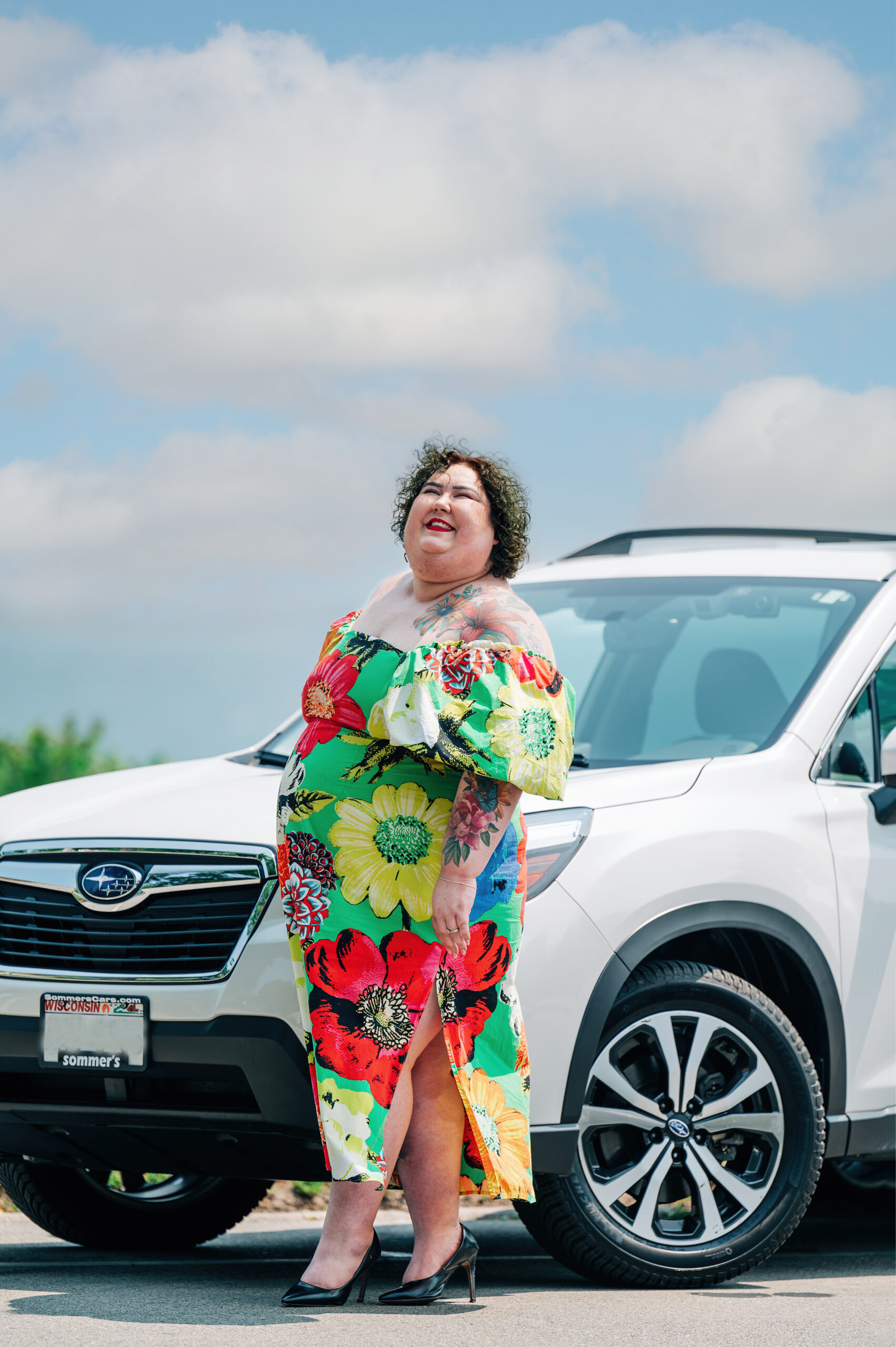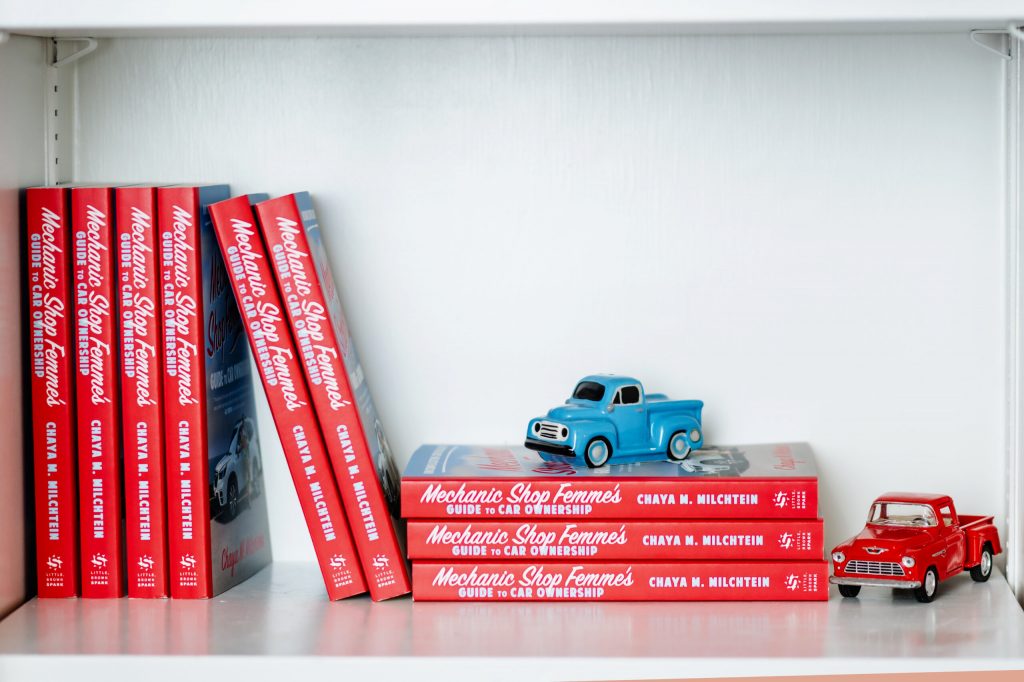Milwaukee’s Mechanic Shop Femme Is All About Autos
Her website and new book seeks to demystify buying and maintaining a car.

Chaya Milchtein is an automotive educator and the founder of Mechanic Shop Femme, an online platform that aims to educate and empower everyday car owners. Photo by McKenna Patterson Photography
For Chaya Milchtein of Milwaukee, buying her first car — a “clunky” 2004 Buick Century — was her ticket out of poverty.
Milchtein, who grew up in Wisconsin’s foster care system, said she never expected to be in a position to buy a car. She said it’s difficult for foster teens to obtain a driver’s license under state law, so she first learned how to drive when she was 18 years old and applying for a job at Sears Auto Center in Glendale.
Ultimately, the credit union approved her loan, setting her on a totally new life path.
“Getting that car gave me independence. It gave me power. It allowed me to reach so much further than I could have ever expected,” Milchtein told WPR’s “Wisconsin Today.”
Since then, Milchtein has built a career as an automotive educator, social media influencer and founder of Mechanic Shop Femme, an online platform that offers information and advice for everyday car owners. She also has a new book out.
She believes educating people about cars can empower them to more confidently navigate an automotive industry that can be intimidating and unwelcoming, especially for women, people of color and members of the LGBTQ+ community.
As a queer woman, Milchtein said she has firsthand experience with being underestimated or mistreated at car dealerships and auto repair shops.
“When you walk into a repair shop, you’re walking into a different world,” she said. “You’re walking into a place where a lot of times, people don’t have the fundamental respect for you, your communities, your life, who you are.”

Chaya Milchtein of Mechanic Shop Femme poses in front of a white Subaru in a colorful dress. She seeks to educate people, especially women and members of the LGBTQ+ community, about car ownership. Photo by McKenna Patterson Photography
Milchtein describes herself as a “mechanic interpreter,” someone who has the automotive know-how and the communication skills to help bridge the knowledge gap for car owners.
That is the focus of Milchtein’s new book, “Mechanic Shop Femme’s Guide to Car Ownership,” which takes readers through the life cycle of car ownership, with chapters about budgeting for and purchasing a car, choosing the right insurance plan, staying on top of maintenance, dealing with emergencies and, when the time comes, selling the car.
She shared a few tips from the book for buying and maintaining a car on “Wisconsin Today.”
Buying a used car online is risky
As tempting as it might be to avoid dealing with a salesperson face-to-face, Milchtein advised against buying a car online unless it’s brand new.
That’s because you won’t have a chance to test-drive the car or have it inspected by a mechanic — both of which Milchtein strongly recommends.
“You have no idea if it has a bad control arm or needs two tires or there’s an oil leak,” she said. “You can’t be prepared for those problems. You can’t use those problems to negotiate the price down. You can’t decide to choose a different vehicle.”
Do your homework before going to the dealership
To put yourself in the best position for negotiating with a private seller or at the dealership, Milchtein recommends learning everything you can before setting foot on the lot.
“You should know the answers to nearly every question you have before you walk in the door … so that you are as prepared and educated as possible to advocate for yourself,” she said.
That could include things like nailing down your budget, researching different makes and models at reputable websites like Consumer Reports and even looking at the history of the specific car you’re interested in.
Make the most of the test-drive
“I cannot emphasize enough the importance of test-driving the car you want to buy,” Milchtein wrote in her book.
And this shouldn’t be just a quick spin around the block. Milchtein recommends test-driving for at least 15 to 30 minutes on both local streets and the highway.
“You need to drive the car to figure out if it’s a fit for you,” she said. “You need to drive the car so that you can listen to it, especially the older and the more miles the car has, to see if there’s anything that sticks out to you, any red flags.”
What you learn on the test-drive could help you negotiate a lower price, budget for needed repairs or decide against purchasing altogether.

Chaya Milchtein is the author of a new book, “Mechanic Shop Femme’s Guide to Car Ownership,” which has chapters about buying, maintaining, repairing and selling your car. Photo by McKenna Patterson Photography
Find a mechanic you trust
Milchtein believes a trusted mechanic is worth their weight in gold. To find the right one, you can start by asking around neighborhood groups and online forums about local mechanics that people love (not just horror stories of who to avoid).
From there, Milchtein recommends scheduling a basic maintenance service like an oil change or a road-trip inspection. You can use this as an opportunity to “interview” a new mechanic or shop and see if their service and communication style is a fit for you.
And don’t get discouraged if the first shop isn’t a fit. Milchtein likens it to dating: It may take a while to find the “right one,” but it’s worth it to hold out for the right fit.
Get to know your owner’s manual
Milchtein is such a believer in the owner’s manual that she dedicated an entire chapter to it in her book. She said it’s a great tool to have as a car owner, especially when it comes to maintenance schedules, like when to change the spark plugs or timing belt on your specific vehicle.
If you can’t find the physical copy of your owner’s manual, Milchtein recommended looking up a digital version online. You can then do a quick ctrl+F search to find the information you’re looking for.
Milchtein told the story of looking at her Subaru owner’s manual for an unrelated question and discovering that Subaru covered brake pad replacements on that car for the first three years or 36,000 miles.
Having just paid for brake pad replacement, she wished she had known the information sooner.
“So, read your owner’s manual — you might save a couple hundred bucks,” she said.
Wisconsin’s Mechanic Shop Femme seeks to demystify buying and maintaining a car was originally published by Wisconsin Public Radio.
If you think stories like this are important, become a member of Urban Milwaukee and help support real, independent journalism. Plus you get some cool added benefits.






















The real shame is how the built environment makes it nearly impossible to live in American cities without a car that costs thousands of dollars a year to maintain. How is that “freedom?”